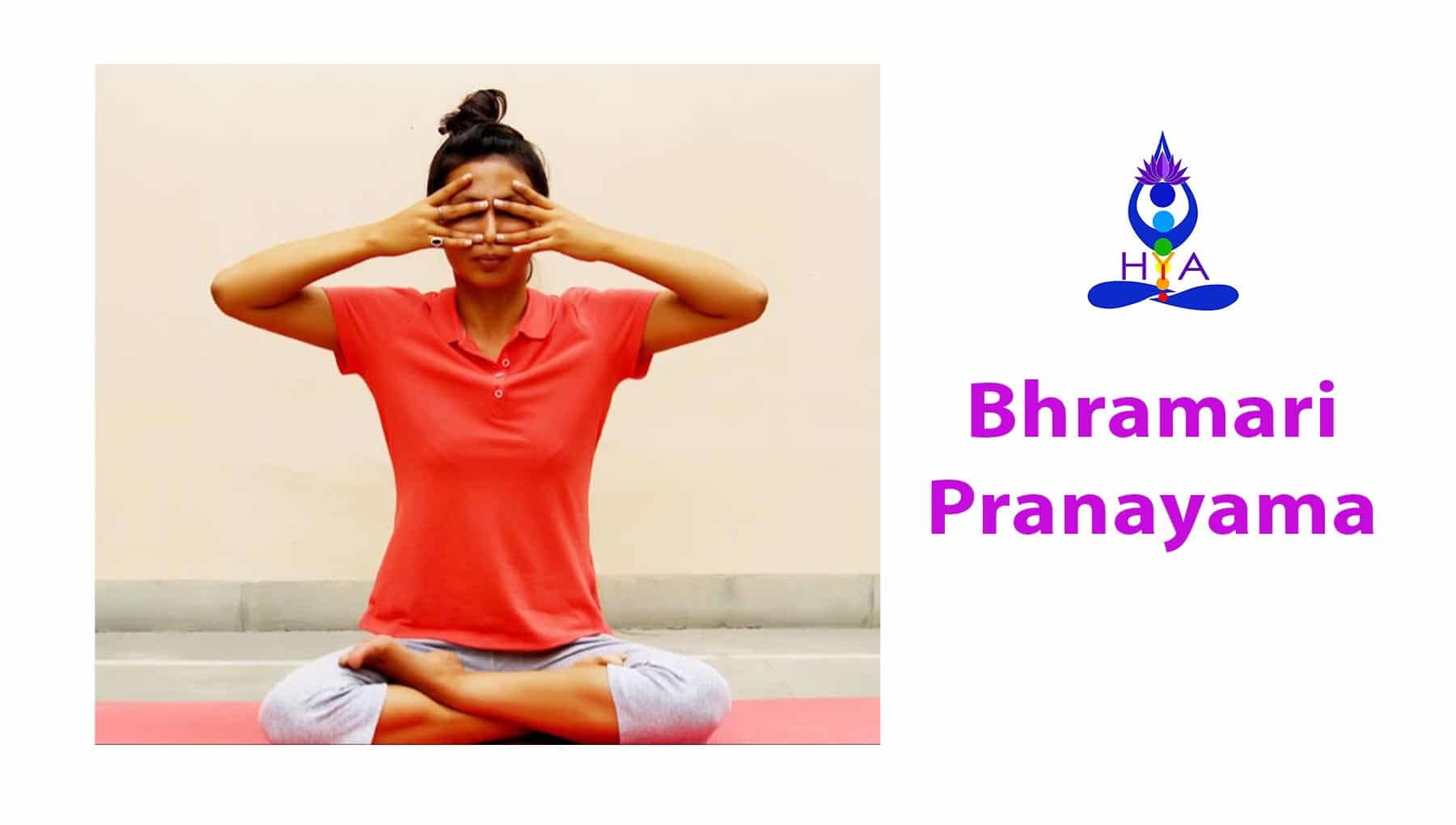
29 Sep 2021 HYN Himalayan Yoga Academy
Bhramari Pranayama also known as the Humming Bee breathing technique is a calming breathing practice. It is derived from the Sanskrit word “Bhramar” which means Bumble Bee. Bhramari is an effective breathing exercise for meditation. It is the action of making a light humming sound in a comfortable seated position.
Bhramari Pranayama helps to release your mind of agitation, frustration, anxiety, and anger. The humming sound vibrations have a natural calming effect. The activity of this respiratory exercise helps to bring a chilling impact on your mind rapidly. It is a simple technique that can be done anywhere at work or home, it is an instant option to de-stress yourself.
In Bhramari Pranayama the exhalation sound resembles the humming sound of the bee so, called Bhramari Pranayama. While practicing Bhramari breath you have to close your eyes, block your ears, and make a humming sound. This can help to block out external distractions.
How To Perform Bhramari Breathing
Technique
- Sit in a comfortable meditation asana, preferably padmasana or Siddha/siddha yoni asana with the hands resting on the knees in jnana or chin mudra.
- Close your eyes and relax the whole body.
- The lips should remain gently closed with the teeth slightly separated throughout the practice. This allows the sound vibration to be heard and felt more distinctly.
- Raise the arms sideways and bend the elbows, bringing the hands to the ears. Use the index or middle fingers to plug the ears or the flaps of the ears may be pressed without inserting the fingers.
- Bring awareness to the center of the head, where the Ajna chakra is located, and keep the body absolutely still.
- Inhale through the nose.
- Exhale slowly and in a controlled manner while making a deep, steady humming sound like that of the black bee.
- The humming sound is smooth, even, and continuous for the duration of the exhalation. The sound should be soft and mellow, making the front of the skull reverberate.
- At the end of exhalation, the hands can be kept steady or returned to the knee and then raised again for the next round. The inhalation and exhalation should be smooth and controlled. This is one round.
While practicing Bhramari breathing, you can feel the vibration of humming in your face. You may notice a vibration sensation in your cheek, bones, teeth, or maybe even on the surface of your skin. Practice balancing the effort while producing humming so that is strong enough to feel the vibration but gentle enough to feel relaxed.
Benefits of Bhramari Pranayama
- It is the instant way to release your stress, anger,, and anxiety.
- Pranayama helps to reduce blood pressure, which relieves hypertension.
- Calms your mind before entering into meditation.
- Builds confidence.
- It strengthens your concentration and memory power.
- It soothes the nerve.
Precautions
- Make sure that you are not putting your finger inside the ear but on the cartilage.
- Don’t press the cartilage too hard. Just place your thumb gently on it.
- Be sure to keep your mouth closed, and gently press your lips while making a humming sound.
- Do not put pressure on your face.
- You can also do Bhramari pranayama with your fingers in Shanmukhi mudra.
- Do not exceed the recommendations repetitions of 3-4 times.
Shanmukhi Mudra
Note: Please make sure to wash your hands with soap and water before and after touching your face.
Shanmukhi Mudra is a hand position that represents closing the six gates of perception. In this hand position the eyes, nose, mouth, and ears are symbolically closed. To use Shanmukhi Mudra in Bhramari Pranayama, Close your eyes and place your index fingers over your closed eyelids. Use your thumb to block your ears, your middle fingers on either side of your nose, your ring fingers just above your closed lips, and your pinky fingers just below your lips. Do not block your nose or hold your breath if you use Shanmukhi Mudra. Make sure your fingers are in the right position in a comfortable position so that you can continuously breathe in and out through your nose.
